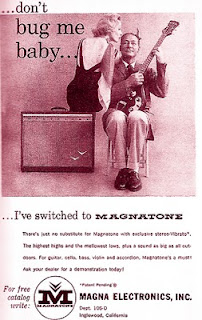A mad musical scientist?
A friend of mine just sent me a link to this NPR program: The Mad Musical Scientist Of Burbank, Calif. It turns out to be a short portrait of composer and sound designer Diego Stocco . His work is very interesting: he is really at the crossroads of several musical traditions. Trained as a violinist, and still a bass player, he acquired valuable classical musician skills. But he is also a heir of Pierre Schaeffer : he is a true Musique concrète living composer. As in many cases, the traditions collide to make him a great creative artist! For instance, check out this 5 minute video showing parts of the creative process for a sound signature: A funny thing is that I just mentioned Diego Stocco as an inspiring person when I was asked a few questions by Cycling '74, in prevision of the workshop I'm giving during Expo '74. Read this short interview before this live spectral processing workshop with Max . And keep in mind that nobody needs any computer or any software tools t...
